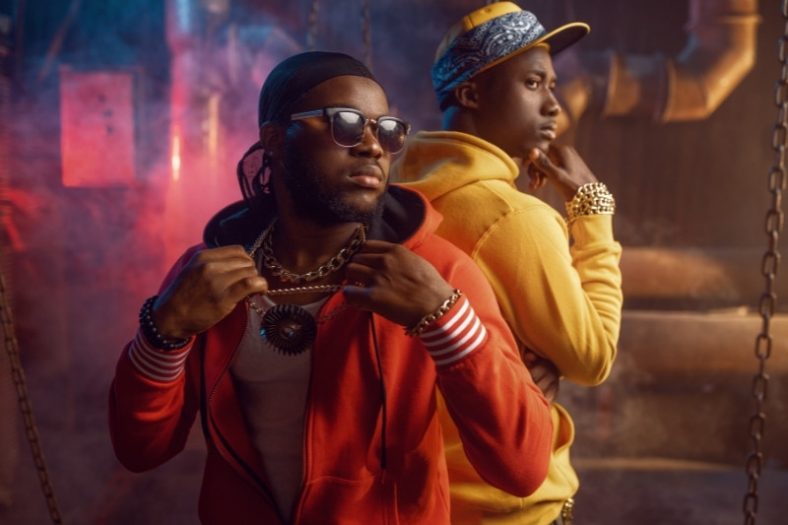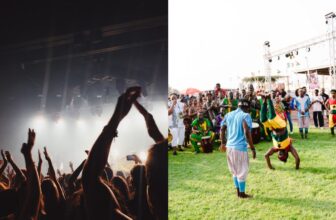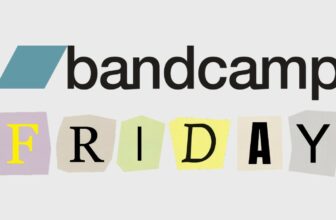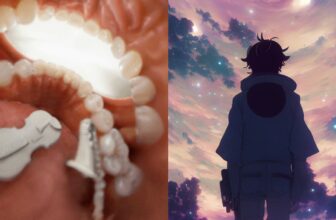How Much Do Rappers Charge For Features?

Famous rappers charge anywhere between $100K and $1 million for a feature. Their fee may vary depending on the number of verses and other factors. Unknown rappers can charge as little as $2K or less for a feature. However, not all features involving rappers (popular or unknown) are paid.
Features are extremely popular in hip-hop music because they help rappers reach a broader audience. More than a way of collaborating with different artists, hip-hop features can make experienced rappers look cooler (by associating them with younger, more hip rappers) and up-and-coming rappers become more popular (by associating them with already-popular rappers).
Pretty much like the diss beat and the 808, features have already become a fundamental part of hip-hop culture. But what are features? How do they help rappers exactly? Why are they so expensive? Let’s dive in deeper.
Contents
What is a Feature and what are the benefits for artists?
A feature is a guest appearance by an artist in a song that belongs to another artist. The term “ft.” is commonly used to let the audience know who’s the creator of the song and who’s the guest artist.
In “Jay-Z – Empire State Of Mind ft. Alicia Keys,” for example, Jay-Z is the song’s creator and Alicia Keys is the featured artist. This generally means that Jay-Z and his team developed the majority of the song (the beat, the hook, the main verses, and so forth) and that Alicia Keys was invited to compose or perform a specific section of the song.
There are many benefits for artists associated with features, both at a commercial and creative level.
Reaching new or wider audiences
The obvious advantage of hip-hop features is that it allows music fans to get to know new artists just by listening to the songs of artists they already like.
With her “Empire State Of Mind” feature, for instance, Alicia Keys probably caught the attention of many Jay-Z fans who’d never heard of her before. This link can be even more powerful when popular artists collaborate with up-and-coming musicians.
Looking cooler or more reputable
Another big plus of features is that it creates associations between artists that can impact their reputation.
When an experienced artist is featured in a song by an up-and-coming musician, for example, he or she acts like a “godfather” to such a musician. This helps unknown musicians look instantly more reputable, pretty much like a high-profile recommendation at a job interview.
In the same way, popular artists who are no longer viewed as “trendy” can get some of their cool back by teaming up with a younger musician. Outside of hip-hop, Dua Lipa’s hit song “Cold Heart” (ft. Elton John) is an example of this phenomenon.
Finding new creative options
Sometimes overlooked, the opportunity to add new musical elements to a song is another important benefit of features.
In hip-hop, it’s common for rappers to rely on guest artists to perform the chorus section, which is usually a melodic part that most rappers cannot sing. That’s precisely why Jay-Z enlisted the vocal talent of Alicia Keys in “Empire State Of Mind,” for example.
But it’s not just that: features also bring a new aesthetic and point of view to a song that will ultimately make the song better. Kendrick Lamar’s seminal hit “B*, Don’t Kill My Vibe” would be an excellent song with or without Jay-Z’s feature. However, pretty much everyone agrees that Jay-Z’s presence only helped to make a great song even better.
Completing songs faster
While regular people measure their work in hours, rappers do so in bars. A normal hip-hop song contains a minimum of 32 bars, which means rappers need to write at least 32 verses before releasing a new track.
With features, completing tracks is a much faster process. Since rappers can delegate 16, 32, or even more bars to a featured artist, they can focus on their bars while someone else is working on the other bars of the song. This can potentially cut the time it takes to compose hip-hop lyrics down to half.
How much do rappers charge for a feature?
The price rappers charge for a feature varies from rapper to rapper and from job to job. However, popular rappers generally charge a minimum of $100K and a maximum of $1 million per feature.
Many rappers have spoken openly about how much they ask for a feature in radio interviews, YouTube videos, podcasts, and social media publications. In this article, Complex compiled some of the most relevant information on the subject.
The table below uses data from these sources and should give you a general idea of how much some of the world’s most popular rappers charge for a feature:
| Rapper | Price per feature in U.S. dollars (approximately) |
| Drake | 1 million |
| Nicki Minaj | 500k |
| Kendrick Lamar | 400k |
| DaBaby | 300k |
| Snoop Dogg | 250k |
| Future | 250k |
| Polo G | 150k |
| Rich the Kid | 120k |
| Lil Baby | 100k |
| YK Osiris | 100k |
| 2 Chainz | 100k |
| J. Cole | 2k per word |
It’s worth noting that the rappers above don’t always ask for money to get featured in a song.
In an interview with W Magazine, the Nigerian artist Davido stated that, while Nicki Minaj charges $500K or more for a feature, she was happy to collaborate with him for free. This generally happens when popular rappers like the artists they’re working with, have met them personally, or feel like they will improve their brand.
Finally, please keep in mind that a feature from the most popular rappers on the planet can’t always be bought. Having the money may not always be enough to get a feature from Drake, Kendrick, or J. Cole. If they dislike the song or the song’s message, they can, and most certainly will reject the offer, even if the money’s good.
How do you approach an artist for a feature?
You can approach an artist by contacting his or her booking agency, sending a private message on social media, getting his or her phone number, or even talking with him or her in person.
Major artists will commonly need their label’s permission to get featured in a song, so it may be a good idea to contact labels directly too.
Unfortunately, there’s no right way of approaching an artist for a feature. Just choose the channel that most suits you and go for it! The most exclusive the channel, the better: after all, more people can send a DM to Drake (for example) on Instagram than call his phone number, so go with number two if you have that chance.
The video below focuses more on contacting influencers than rappers, but it provides some helpful insights into what you can do to make your approach more effective.
I’m a big fan of the idea of cold-calling (contacting someone out of nowhere) versus warm-calling (contacting someone after getting his or her attention) and the notion that you shouldn’t go for the most popular rapper at the start but take small steps, one at a time.
What factors determine the price of a feature?
The most significant factors that determine the price of a feature are: the popularity of the featured rapper, the number of verses he or she will perform, and the time he or she will commit to other aspects of the project (such as social media promotion, music-video features, and so forth).
For example: in a DX News interview, Snoop Dogg revealed that he charges approximately $250K per feature. However, he also added that this feature is limited to 16 bars and that artists need to pay an extra $250K if they want him to appear in the music video.
This makes sense because Snoop is simply valuing his time. Coming up with 32 verses is not as easy as coming up with 16 and traveling to film a music video can be extremely time-consuming. So, it makes sense that Snoop gets paid extra for the extra hours he’s putting in.
Conclusion
Features can help unknown rappers to go from nothing to stardom and even revitalize the careers of old hip-hop legends. But, most importantly, they’re a fundamental part of hip-hop culture.
While many paid features have been huge successes, the most significant features in hip-hop history have most likely cost nothing to both parts. Paying for a feature can be a smart choice for an ambitious musician, but there’s nothing quite like counting on the honest support, love, and contribution of a free feature.





